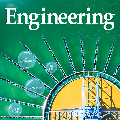Computational Law has begun taking the role in society which has been predicted for some time. Automated decision-making and systems which assist users are now used in various jurisdictions, but with this maturity come certain caveats. Computational Law exists on the platforms which enable it, in this case digital systems, which means that it inherits the same flaws. Cybersecurity addresses these potential weaknesses. In this paper we go through known issues and discuss them in the various levels, from design to the physical realm. We also look at machine-learning specific adversarial problems. Additionally, we make certain considerations regarding computational law and existing and future legislation. Finally, we present three recommendations which are necessary for computational law to function globally, and which follow ideas in safety and security engineering. As indicated, we find that computational law must seriously consider that not only does it face the same risks as other types of software and computer systems, but that failures within it may cause financial or physical damage, as well as injustice. Consequences of Computational Legal systems failing are greater than if they were merely software and hardware. If the system employs machine-learning, it must take note of the very specific dangers which this brings, of which data poisoning is the classic example. Computational law must also be explicitly legislated for, which we show is not the case currently in the EU, and this is also true for the cybersecurity aspects that will be relevant to it. But there is great hope in EU's proposed AI Act, which makes an important attempt at taking the specific problems which Computational Law bring into the legal sphere. Our recommendations for Computational Law and Cybersecurity are: Accommodation of threats, adequate use, and that humans remain in the centre of their deployment.
翻译:计算法开始在社会上扮演预言了一段时间以来的社会角色。 自动决策和系统帮助用户的系统现在被不同司法管辖区使用, 但随着这个成熟度的提高,我们提出三条建议。 计算法存在于能够使其运行的平台上, 也就是数字系统, 这意味着它继承了同样的缺陷。 网络安全解决了这些潜在的弱点。 在本文中, 我们从设计到物理领域, 我们从已知的问题到讨论这些问题, 从设计到物理领域。 我们还研究机器学习具体的对抗问题。 此外, 我们对计算法和现有及未来立法进行某些考虑。 最后, 我们提出三条建议, 这对于计算法在全球运作是必要的, 并遵循安全和安保工程方面的想法。 我们发现,计算法必须认真考虑它不仅与其他类型的软件和计算机系统一样面临同样的风险, 而且它内部的失败可能会造成财务或物质损害, 以及不公正。 计算法体系的失败的后果比仅仅是软件和硬件的计算。 如果系统使用机器学习系统, 以及现有和未来的立法。 最后, 我们提出的三个建议是计算法的尝试, 并且它必须清楚地指出, 我们的法律领域需要一个非常具体的危险。



